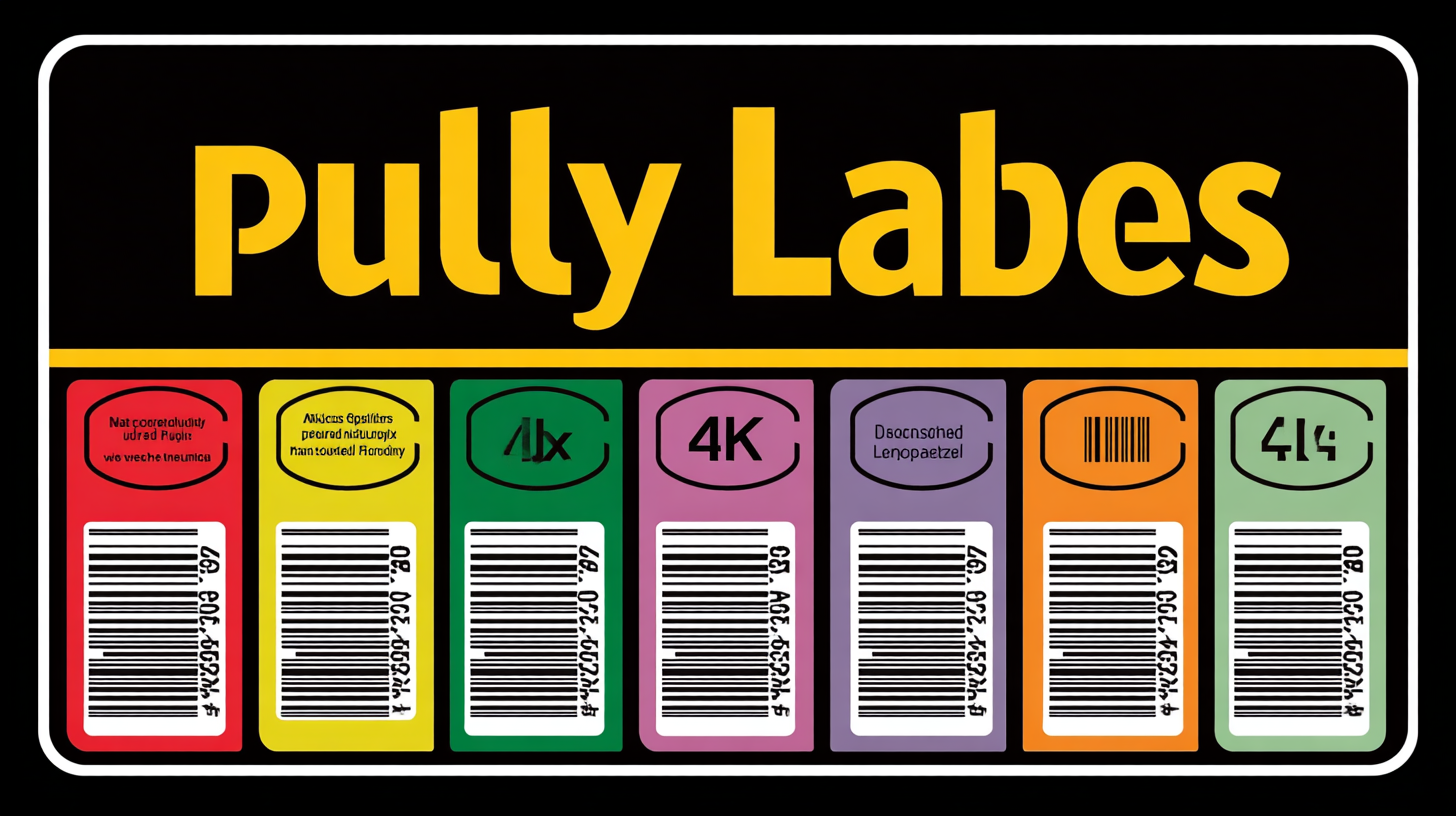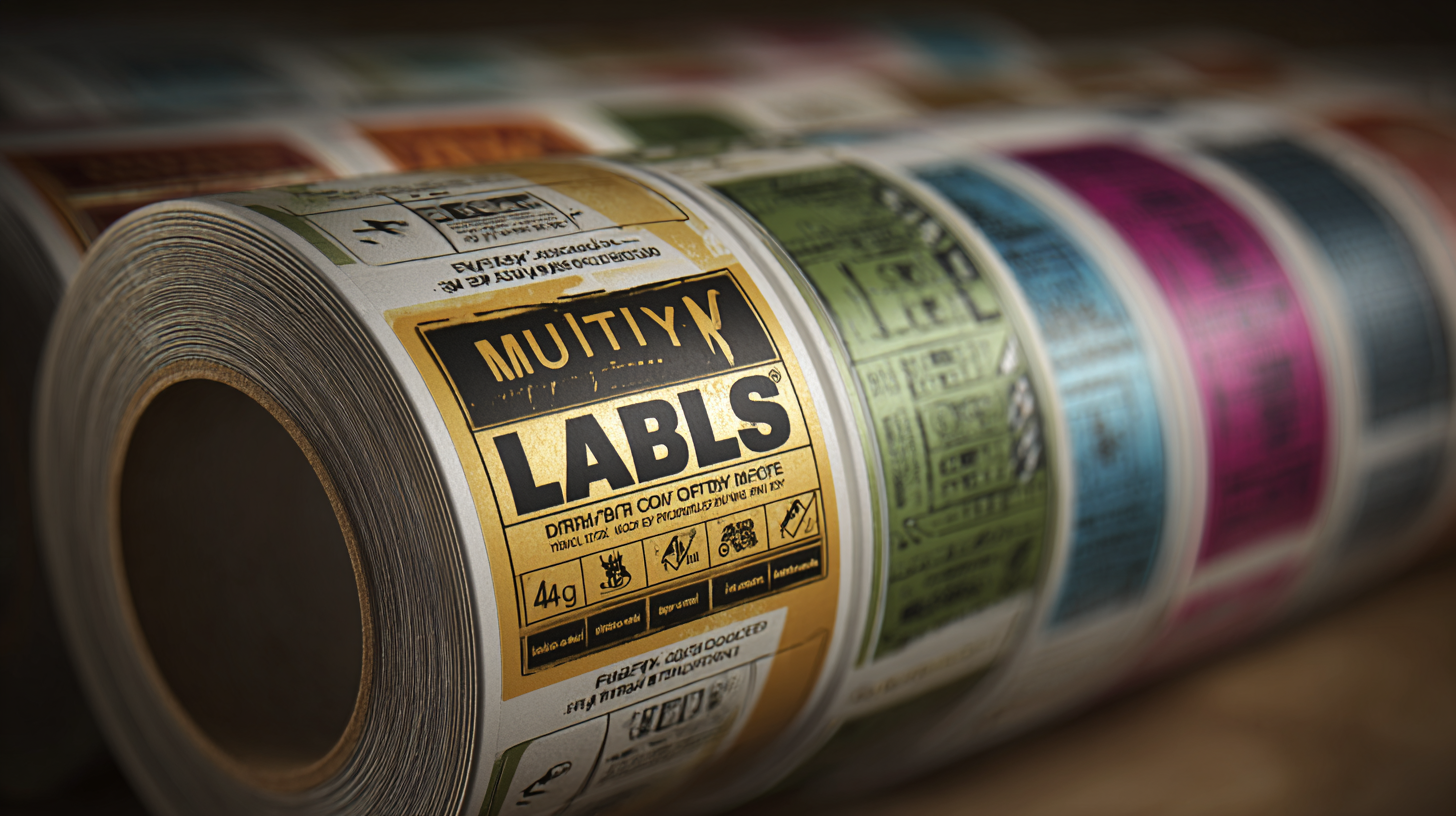Solutions for Sourcing the Best Multi Ply Labels: Your Ultimate Guide to Quality and Efficiency
In the rapidly evolving landscape of packaging technology, the use of Multi Ply Labels has emerged as a key trend driving efficiency and quality in various industries. According to a recent report by Smithers Pira, the global market for label production is expected to surpass $45 billion by 2025, with Multi Ply Labels playing a vital role in this growth due to their versatile applications and superior performance.
These labels are particularly favored for their ability to provide extensive information while utilizing minimal space, making them ideal for sectors ranging from food and beverage to pharmaceuticals. As businesses strive to enhance their branding and comply with regulatory requirements, the demand for high-quality Multi Ply Labels continues to rise.
This ultimate guide will explore the best strategies for sourcing these innovative labeling solutions, ensuring that companies achieve both operational efficiency and exceptional product presentation.
Benefits of Multi Ply Labels in Diverse Industries
Multi-ply labels have emerged as a vital solution across various industries, thanks to their unique ability to enhance functionality without sacrificing quality. According to a recent report by Smithers Pira, the global market for specialty labels is projected to reach $40 billion by 2025, driven largely by the increasing popularity of multi-ply labels in sectors such as food and beverage, pharmaceuticals, and logistics. These labels provide excellent durability and adaptability, making them ideal for products that require detailed information and compliance with strict regulatory standards.
In the food industry, for instance, multi-ply labels facilitate nutritional information, allergy warnings, and ingredient lists, often on a single label, reducing material waste while improving consumer safety. A study from the Label Industry Global Market Report indicated that nearly 40% of consumers are influenced by label information when making purchasing decisions, highlighting the importance of clear and accessible product data. Similarly, in pharmaceuticals, the ability of multi-ply labels to securely contain crucial drug information while mitigating counterfeiting risks is transforming how manufacturers approach packaging. With the demand for effective branding and informative labeling continuing to rise, multi-ply labels stand out as a strategic tool for enhancing product appeal and compliance across diverse industries.
Impact of Multi Ply Labels on Product Durability and Shelf Life
Multi-ply labels offer a transformative solution for brands aiming to enhance the durability and shelf life of their products. By integrating multiple layers, these labels provide exceptional resistance to moisture, chemicals, and environmental wear, ensuring that important product information remains legible and intact over extended periods. This added durability is particularly advantageous for products exposed to harsh conditions, such as food items or chemical substances, where label integrity can significantly impact consumer trust and compliance with regulations.
Moreover, the versatility of multi-ply labels allows for the inclusion of additional information without cluttering the design. The hidden layers can store extended details, such as usage instructions, product origins, or promotional messages, allowing brands to present a comprehensive image while maintaining a clean aesthetic on the product’s exterior. This not only enhances shelf appeal but also informs consumers, ultimately contributing to improved customer satisfaction and engagement. As businesses seek solutions to boost product longevity, investing in high-quality multi-ply labels represents a strategic choice that aligns with modern market demands.
Impact of Multi Ply Labels on Product Durability and Shelf Life
This chart illustrates the impact of multi ply labels on the durability and shelf life of products in various categories. The data showcases the average increase in shelf life (in days) attributed to the use of multi ply labels compared to standard labels.
Cost-Effectiveness of Multi Ply Labels in High-Volume Production
When it comes to high-volume production, the cost-effectiveness of multi-ply labels cannot be overstated.
These labels, designed to provide multiple layers of information in a compact format, offer manufacturers significant savings on material costs. By consolidating several labels into one, businesses can reduce waste and streamline their labeling process,
leading to decreased expenditure in both materials and labor. This efficiency not only enhances the bottom line but also contributes to a more sustainable production model by minimizing the overall footprint of packaging materials.
Moreover, multi-ply labels are particularly advantageous in industries such as pharmaceuticals and food, where compliance with regulatory standards is crucial.
Their ability to present detailed information clearly and concisely on a limited space means that manufacturers can avoid the costs associated with fines or product recalls due to mislabeling.
Additionally, these labels can often withstand harsh conditions and maintain their integrity throughout the supply chain, ensuring that the product and its information remain intact until the end user receives them.
By investing in high-quality multi-ply labels, companies are not only ensuring label durability and functionality but also securing their financial interests in a competitive market.
Environmental Considerations: The Sustainability of Multi Ply Labels
When considering the environmental impact of packaging, multi-ply labels have emerged as a sustainable choice in the labeling industry. These labels are designed with multiple layers, often allowing for enhanced content without the need for excessive materials. The use of recyclable substrates and eco-friendly adhesives in the production of multi-ply labels significantly reduces waste and minimizes their carbon footprint. By choosing these labels, companies can align their branding with eco-conscious practices, contributing positively to their sustainability goals.

Moreover, the durability of multi-ply labels means that they are less likely to tear or wear out, which can decrease the frequency of replacements and further reduce material consumption. Many manufacturers are now focusing on using sustainably sourced materials, ensuring that the production process is not only efficient but also environmentally responsible. As consumers become more aware of sustainability issues, opting for multi-ply labels not only enhances product appeal but also demonstrates a commitment to innovative and eco-friendly practices within the industry.
Key Market Trends Driving the Demand for Multi Ply Labels
In recent years, the demand for multi-ply labels has surged significantly, driven by a variety of market trends that underscore the need for innovative and efficient labeling solutions. One of the primary factors propelling this growth is the increasing demand for product sustainability and eco-friendly packaging. Manufacturers and consumers alike are becoming more environmentally conscious, seeking labels that not only provide vital information but also use sustainable materials and processes.
 Multi-ply labels offer a unique advantage in this regard, allowing brands to convey essential product details while minimizing material waste.
Multi-ply labels offer a unique advantage in this regard, allowing brands to convey essential product details while minimizing material waste.
Another market trend influencing the escalation of multi-ply label demand is the rise of e-commerce and the need for improved product traceability. As businesses heavily rely on online sales, the necessity for labels that can accommodate additional information, such as tracking codes and batch numbers, becomes critical. Multi-ply labels make it easier to include such information without compromising on design or functionality.
Furthermore, as industries like food and pharmaceuticals face stricter regulatory requirements, the ability of multi-ply labels to combine various layers of data into a compact format ensures compliance while enhancing consumer trust.





 Multi-ply labels offer a unique advantage in this regard, allowing brands to convey essential product details while minimizing material waste.
Multi-ply labels offer a unique advantage in this regard, allowing brands to convey essential product details while minimizing material waste.
